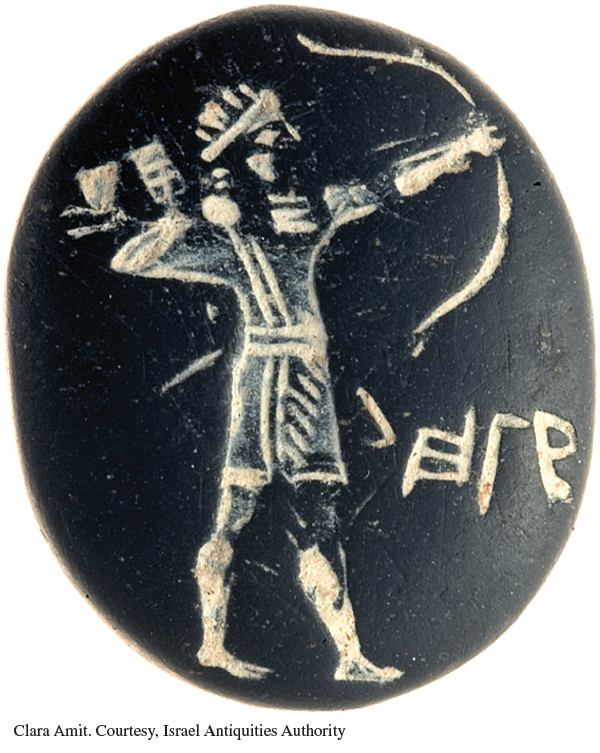Hebrew Family and Society
The Hebrews were originally nomadic, but they adopted settled agriculture in Canaan, and some lived in cities. The shift away from pastoralism affected more than just how people fed themselves. Communal use of land gave way to family or private ownership, and devotion to the traditions of Judaism came to replace tribal identity.
Family relationships reflected evolving circumstances. Marriage and the family were fundamentally important in Jewish life; celibacy was frowned upon and almost all major Jewish thinkers and priests were married. Polygamy was allowed, but the typical marriage was probably monogamous. In the codes of conduct written down in the Hebrew Bible, sex between a married woman and a man not her husband was an “abomination,” as were incest and sex between men. Men were free to have sexual relations with concubines, servants, and slaves, however.
As in Mesopotamia and Egypt, marriage was a family matter, too important to be left to the whims of young people. (See “Evaluating the Evidence 2.2: A Jewish Family Contract.”) Although specific rituals may have been expected to ensure ritual purity in sexual relations, sex itself was viewed as part of Yahweh’s creation and the bearing of children was seen in some ways as a religious function. Sons were especially desired because they maintained the family bloodline, while keeping ancestral property in the family. As in Mesopotamia, land was handed down within families, generally from father to son. A firstborn son became the head of the household at his father’s death. Mothers oversaw the early education of the children, but as boys grew older, their fathers gave them more of their education. Both men and women were expected to know religious traditions so that they could teach their children and prepare for religious rituals and ceremonies. Women worked in the fields alongside their husbands in rural areas, and in shops in the cities. According to biblical codes, menstruation and childbirth made women ritually impure, but the implications of this in ancient times are contested by scholars.
Children, according to the book of Psalms, “are a heritage of the lord, and the fruit of the womb is his reward” (Psalms 128:3), and newly married couples were expected to begin a family at once. The desire for children to perpetuate the family was so strong that if a man died before he could sire a son, his brother was legally obliged to marry the widow. The son born of the brother was thereafter considered the offspring of the dead man. If the brother refused, the widow had her revenge by denouncing him to the elders and publicly spitting in his face.
The development of urban life among the Jews created new economic opportunities, especially in crafts and trades. People specialized in certain occupations, such as milling flour, baking bread, making pottery, weaving, and carpentry. As in most ancient societies, these crafts were family trades. Sons worked with their father, daughters with their mother. If the business prospered, the family might be assisted by a few paid workers or slaves. The practitioners of a craft usually lived in a particular section of town, a custom still prevalent in the Near East today. Commerce and trade developed later than crafts. Trade with neighboring countries was handled by foreigners, usually Phoenicians. Jews dealt mainly in local trade, and in most instances craftsmen and farmers sold directly to their customers.

The Torah sets out rules about many aspects of life, including skin diseases, seminal emissions, childbirth, sexual actions, and animal sacrifices. Among these was the set of dietary laws known as kashrut (from which we derive the English word kosher, which means ritually pure and ready to be eaten), setting out what plants and animals Jews were forbidden to eat and how foods were to be prepared properly. Prohibited animals included pigs, rabbits, many birds, insects (except for locusts), and shellfish, as well as any animal not slaughtered in the proper way. Meat and dairy products were not to be eaten at the same meal or cooked in the same utensils. Later commentators sought to explain these laws as originating in concerns about health or hygiene, but the biblical text simply gives them as rules coming from Yahweh, sometimes expressed in terms of ritual purity or cleanliness. It is not clear how these rules were followed during the biblical period, because detailed interpretations were written down only much later, during the time of the Roman Empire, in the Talmud, a work that records civil and ceremonial law and Jewish traditions. Most scholars see the written laws as based on earlier oral traditions, but as with any law code, from Hammurabi’s to contemporary ones, it is much easier to learn about what people were supposed to do according to the laws of the Torah than what they actually did.
Beliefs and practices that made Jews distinctive endured, but the Hebrew states did not. Small states like those of the Phoenicians and the Hebrews could exist only in the absence of a major power, and the beginning of the ninth century B.C.E. saw the rise of such a power: the Assyrians of northern Mesopotamia. They conquered the kingdom of Israel, the Phoenician cities, and eventually many other states as well.